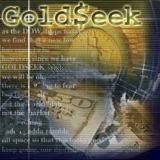

| Online: | |
| Visits: | |
| Stories: |

| Story Views | |
| Now: | |
| Last Hour: | |
| Last 24 Hours: | |
| Total: | |
Ratios at Work
By CaptainHook / TreasureChest.info / GoldSeek.com
A subscriber asked if we would explain how to read / decipher the ratio charts we work with, so here you go, as it’s about time again.
In this regard, there are in fact two types of ratio related charts we work with, and both will be covered here today.
Firstly, we will cover the ETF / Index charts used in our monthly ‘true sentiment’ studies, the most recent of which is attached here, with the analysis attached as well, published the day following the posting of the charts. What makes these ratio charts and monthly analysis so important? Firstly, these ratios are ‘open interest ratios’ (not volume) meaning they measure closing trade levels of the respective ETF / index (or stock), meaning the traders feel strongly about these positions because they are willing to hold them overnight, if not longer. Because hedging positions, which constitute a fairly large percentage of the trade in most cases, are often held until expiry.
So some of these positions are hedges, which waters down the predictive value of even this measure, however at the margin, open interest put / call ratios are the only remaining indicator that measures ‘true sentiment’ in a market (security, ETF, index) in question. This is borne out in the observation you could have gone to ZeroHedge since 2010 and read hundreds (if not thousands) of stories purporting to be meaningful indications of sentiment, which are almost all negative (which has turned into something ugly for unwary followers who don’t realize what is happening because they have lost a great deal of money shorting stocks over the years, not to mention the psychological damage), and yet, stocks continue to grind higher in a rinse and repeat continuum month in and month out. (i.e. the perpetual short squeeze.)
Why is this? It’s because the markets are no longer markets, but betting parlors controlled by computers that make sure the house always wins. This is because the computers are programmed to never pay the consensus, where the house (the plugged in players on Wall Street) always takes the other side of the trade. (i.e. on the very real basis the few can not pay the many in any market.) This is why Goldman Sachs made money in the sub-prime crisis, etc. Within the process, the consensus of gamblers in the derivatives market(s) lead the entire pricing structure based on the distribution between puts and calls, and because they are willing to hold them overnight, which is the ‘open interest’ (closing basis) measure, it’s a show of conviction, even if the position is a structural hedge put on every month.
Volume ratios are just noise created by the machines, and stopped being any kind of sentiment indicator years ago with the likes of any of the other (sentiment) indicators that used to work before the machines completely took over trade in the 90’s. This is of course what explains the serial bubbles that have developed since then, in everything from stocks to commodities, with a little help from the printing of course. For the perpetual short squeeze in stocks (no market goes up in manic fashion unless some sort of mechanism like this is operating), the story goes like this. The increasing bad news and valuation concerns cause speculators / hedgers to drive open interest put / call ratios across the spectrum of relevant indexes, ETF’s, and stocks higher, causing the machines to squeeze these positions as long as the ratios are above unity. (i.e. more puts than calls.)
Because again, the many must pay the few in any market – not the other way around – which is why we follow both our key broad market and precious metals open interest put / call ratios, which again, you can see in the attached above. And again, when you look at them, one should notice that in the case of broad market measures which takes us from the SPX down to HYG, it should be noticed the ratios are almost always above unity, and even if a few are not, enough of them are to keep the machines busy, which is why stocks can continue to ignore reality until this changes. This is the price managing bureaucracy’s primary tool in keeping stocks buoyant no matter what is happening. It’s self-managing and never gets tired or flustered because the process involves machines set against stupid and stubborn gambling humans who do. Thank god their days are numbered.
And it’s just the opposite ratio wise for precious metals, whose open interest put / call ratios are always below unity (more calls than puts), because the fundamentals are ‘so great’, which is why the machines can keep them contained. Now you may be able to see why I get so mad at the morons who play in these derivative markets (that shouldn’t be), because they obviously don’t understand what they are doing, which is evident in the fact they have keep the ratios below unity for so long now. Thing is, there’s no way they check the put / call ratios, more specifically the open interest variety, if they know they exist. And we are talking hedge funds here folks, where the majority should not be in business – and won’t be one day – when the Fed stops bailing them out.
You can’t keep repeating a failing strategy forever and stay in business. One day, these idiots will stop being bailed out and that will be it. Then precious metals will soar, as anybody with more than two brain cells to rub together remaining (the numbers are fading) will be looking to escape credit risk up and down the scales – including the sovereigns. What’s interesting is based on the trade that has occurred since the last expiry (two Fridays ago), this process may in fact be accelerating as we speak. In terms of the broad market measures, with the exceptions of SPX, MNX and RUT, all the other ratio are falling with prices, which is of course the bearish signature we watch for indicating (bearish) speculator exhaustion. The VXX ratio is not rising, which would normally be a red flag the trend(s) will remain in tact, however, if looking closely one can see it’s following prices now, not leading.
Looking at the precious metals ratios, which can be seen here, nothing has changed, with both the GDX and DUST working to keep the trade contained, however it wouldn’t take much to change the big picture here with many of the other ratios in position to support prices. You will remember from our analysis last week, what’s happening in the sector right now is the large and dominant ratios (GDX and DUST) are keeping prices down because the speculators here are bullish, and betting that way – the idiot hedge funds. Thing is, the next level down, the semi-wealthy speculators who play the juniors are catching on to the fact the funds are so stupid, and are hedging their bets in GDXJ and JNUG, which is why these ratios are elevated, with GDXJ well over unity. Just to remind, remember, because DUST is a bear ETF, if the put / call ratio is rising this is bearish. (i.e. because the machines will do contango related selling in the shares.)
So while profound change may be afoot in broad market measures, there’s still a ways to go before we can talk about a noticeable sentiment change in precious metals. That said, the groundwork is being laid for such a change, from a sector-wide bullish posture to bearish in proper fashion given precious metals should decline in the initial stages of a ‘deflation scare’ anyway, which is the set-up right now. Once this occurs, and the fools that play the derivatives start betting bearish / hedging (like they do in broad market measures now), the next leg of the precious metals bull market can commence, as prices begin to climb a ‘wall of worry’. And again, it appears we are close to change in the broad market measures as we speak, so let’s keep our fingers crossed. It will be interesting to see if the Dow can climb above 21,000 again to vex 22,000 before it falls below 20,000. You will remember from previous discussion on this subject matter a close below 20,000 should be taken as a serious sell signal. (See Figure 1)
Figure 1

Thusly, we watch the 20,500 interval (500-point interval) with great interest, because it’s my opinion if it fails the large round number at 20,000 will go eventually as well. A very bad thing happened on Friday to Donald Trump and his Presidency, because he posed an ultimatum to Congress on the Trumpcare bill, and it naturally failed. (i.e. because they are loyal to their benefactors [big pharma] and they want to discredit [and remove] Trump.) Thing is, while this alone is bad enough, now that Congress has shown Trump who’s boss, they will continue to make his life difficult in every other way possible, with the debt ceilingand tax cuts now in view. Combine this loss of momentum with the growing complacency being exhibited by derivatives speculators / hedgers, and you have the most bearish set-up for stocks in quite some time – potentially (likely?) profound enough to trump corporate buybacks; given they are now topping anyway, which in an of itself is bearish. This is exactly where and why techs could cease leading stocks higher any day now
That’s all for today folks. If you want to see the charts, observations, and conclusions that go along with them from the rest of this commentary, please visit our site at treasurechests.info and subscribe.
You will not regret it.
Captain Hook
The above was an excerpt from commentary that originally appeared at Treasure Chests for the benefit of subscribers on Monday, March 27, 2017.
Treasure Chests is a market timing service specializing in value based position trading in the precious metals and equity markets, with an orientation primarily geared to identifying intermediate-term swing trading opportunities, which is an investing style proven to yield successful outcomes in the longer term. Specific opportunities are identified utilizing a combination of fundamental, technical, and inter-market analysis. This style of investing has proven to be very successful for wealthy and sophisticated investors, as it reduces risk and enhances returns when the methodology is applied effectively. Those interested in discovering more about how the strategies described above can enhance your wealth should visit our web site at http://www.treasurechests.info.
Copyright © 2017 www.treasurechests.info . All rights reserved.
Permission to Post

http://news.goldseek.com/CaptainHook/1491830398.php
More great articles here: http://goldseek.com


